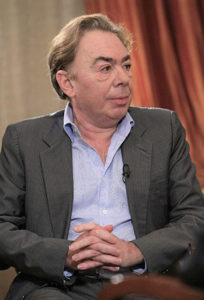
Barbara L. Benson was born in Kent, England, but has called America—and Barrington, Illinois—home for most of her life. Through our pages for the past eight years, she has often leveraged her multi-nation’s unique point of view and added valuable knowledge and perspective. We asked her to share her thoughts on King Charles’ recent Coronation.
In an earlier article for Quintessential Barrington, “A Royal Remembrance,” I recalled that the first time I watched television, in black and white, was for the Coronation of Queen Elizabeth the Second on June 2, 1953. I was 15 years old, in England. It was inevitable that I would, 70 years later, on May 6, 2023, wake up at 4 a.m., at home in Barrington, Illinois, to watch the worldwide broadcast for the Coronation of her son, King Charles the Third.
So much had changed. A young queen began her reign with the scars of the Second World War still mapped across the British Isles, and Ration Books remained in use. The British Empire was transitioning to a free-will British Commonwealth of Nations and social and economic compacts were undergoing universal change. With steadfastness, loyalty, and grace the Queen would thrive and endure through some of the greatest transformations in the history of mankind, until age finally claimed her at 96, shortly after she had performed one of her last Constitutional Royal duties, the appointment of a new Prime Minister.
Her son’s inheritance is that of his family in transition, and a world emerging from another struggle: the aftermath of a pandemic that has also decimated societies and economies. Queen Elizabeth’s Coronation took place almost 16 months after her accession to the throne; for her son there would be only eight months to prepare for the most important event of his already long life. From the solemn pageantry for a sovereign’s funeral, to the celebrations of crowning a new Monarch, centered in the ancient Abbey of Westminster, there was little time for the participants to prepare, and much time for public speculation.
Gradually, the day’s events and Order of Service were announced. Attendance in the Abbey was to be less than a third of the 8,000 nobles, notables, and overseas representatives who had been squashed into specially built stands in 1953. While members of the Royal Family, and those of higher and traditional office wore their robes and decorations, for the most part, hereditary opulence was scaled back.
Not scaled down was a service that reflected the interests of the King and his wife, to be crowned as Queen Camilla. Musicians and choirs were gathered from far and wide, so that from beginning to end, as the worldwide audience experienced the sacred aspects of the Coronation Rite, they were treated to a glorious festival of music and architecture.
One of the great composers of our time is Sir Andrew Lloyd Webber. His music and songs have reverberated across and within thousands of stages, screens, concert halls, and churches, and Sir Andrew was now asked by his friend King Charles to write a Coronation Anthem to be played during the enthroning of Queen Camilla.
He sought inspiration in Psalm 95: It was time to “Make a Joyful Noise.” And they did. The Fanfare Trumpeters of the Royal Air Force, the Choir of Westminster Abbey, and members of the Royal Philharmonic Orchestra filled the Abbey with sound perhaps as never before. Cameras placed high in the Abbey’s soaring rafters captured the memorable scene below. As the Archbishop of Canterbury carried the congregation through the mystical rites of anointing a king, for the first time he was joined by leaders of other faiths now a part of everyday life in the United Kingdom.
And all the while, there was sacred music old and new, thoughtful in the selections; spiritual, reflective, hopeful, sounding out from a thousand years of history to offer, for a few precious hours, a joyful noise across the world.
Share this Story
 One of the great composers of our time is Sir Andrew Lloyd Webber. His music and songs have reverberated across and within thousands of stages, screens, concert halls, and churches, and Sir Andrew was now asked by his friend King Charles to write a Coronation Anthem to be played during the enthroning of Queen Camilla.
One of the great composers of our time is Sir Andrew Lloyd Webber. His music and songs have reverberated across and within thousands of stages, screens, concert halls, and churches, and Sir Andrew was now asked by his friend King Charles to write a Coronation Anthem to be played during the enthroning of Queen Camilla.